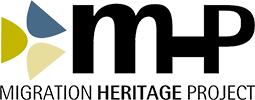Recording and documenting history, whether your own or a community, takes many resources. To begin with, it is best if you have a computer, printer, scanner and digital camera. Current trends and practices are making collecting information almost totally electronic. Digital cameras allow the photographing of objects to occur instantaneously and the computer is an excellent storage facility of information that can be shared. Recording equipment, such as a microcassette recorder with dictaphone capability, is also a very useful item to have and is a much more efficient means to record interviews and provides a more accurate account of what was said. In addition to this equipment, consumable items such as paper for printing out copies of documents or photographs and external hard disk drives (or cloud storage) to store images and to back up your computer files are an ongoing cost, as is archival storage materials. All in all, it takes time and a little money to sustain a collection.
Before you start your project determine your approach and your collection policy. That is, what are you going to collect? Then survey what is currently held to ensure that you are not duplicating what has already been collected. Always start with the elderly first and always catalogue photographs, objects etc with names, dates etc because it is always harder to go back and get the information. Whether these items are to be donated or to be copied should be left up to the individual. Custodians of this information must be prepared to preserve it. Custodians have a moral obligation to protect images being abused by stereotypes, so access must be controlled. Forms therefore must be prepared for authorisation of use, copyright and access. Names and addresses of donors should not be revealed as this would allow people to go directly to the donors and the risk of misrepresenting the donors is very real. If you are an organisation, it should be essentially a community-based one to give your collection credibility and it should serve the community and schools on immigration and socialisation. Try to have a collaborative agreement with main stream repositories such as libraries or museums where copies can be deposited. These comments are drawn from personal experiences by organisations and individuals who are collecting and documenting migrant history.

Your Own Family History
Every Story Counts is a valuable reference and guide to assist you with your research.
Tracing family history is a bit more difficult when it involves countries other than Britain, Wales, Scotland and Ireland. Each country has different collecting agencies that keep records of birth, deaths, marriages etc, not to mention changes to borders and countries which mean family records might found across more than one country, in Northern Italy some records may be found for your Italian ancestor in Austria and then there were changes on who and how records were to be kept during Napoleon’s era. Also taking Italy as an example again, the local “Town Hall” will have records, as do churches and other State agencies. So to a certain extent you will need to know about the history of the country of your ancestors birth and world events that changed which country had control of that part of the world. Sometimes a simple a Google search on how to trace your family history in a particular country will provide information on who you need to contact to obtain overseas records or allow you to join forums and ask questions. Sometimes wars and natural disasters result in records being destroyed, this is not limited to non-British records, as natural disasters and wars had a similar result on some of those records too.
To begin with, start with yourself listing your own date and place of birth, marriage, children and work back from there listing your mother and father’s details and continue working back. Ask your living relatives these questions. Family Group Sheets are what you will need to use to compile this information. In Australia you can obtain immigration and naturalisation records from the National Archives of Australia online. Some records are also available from the relevant state archives and depending on what date your ancestor migrated to Australia or requested naturalisation some state archives may hold these records too because the individual states were at one point responsible for immigration and naturalisation.
It is always good to obtain the actual records to support the information supplied to you from your family members as sometimes dates of events they give you may be not be entirely accurate. Obtaining records will build the skeleton of your family history and family memories and stories provide the meat for the skeleton.
Some digital ancestry platforms you see advertised on TV will allow you to search their databases many of which will include overseas countries, but once again you may be required to subscribe and pay a monthly or yearly subscription fee. These types of ancestry platforms also provide forms, such as the family group form that was previously mentioned, to allow you to complete details about your family members and will automatically generate family trees or descendent trees once you input that information into their programme. Some of the ancestry platforms already have family trees uploaded and made public for you to access and if you are lucky a lot of the work has been done for you.
Local Family History groups may be of assistance too and should be contacted to see what records they have and if they have any resources that could help you in your family history research.


